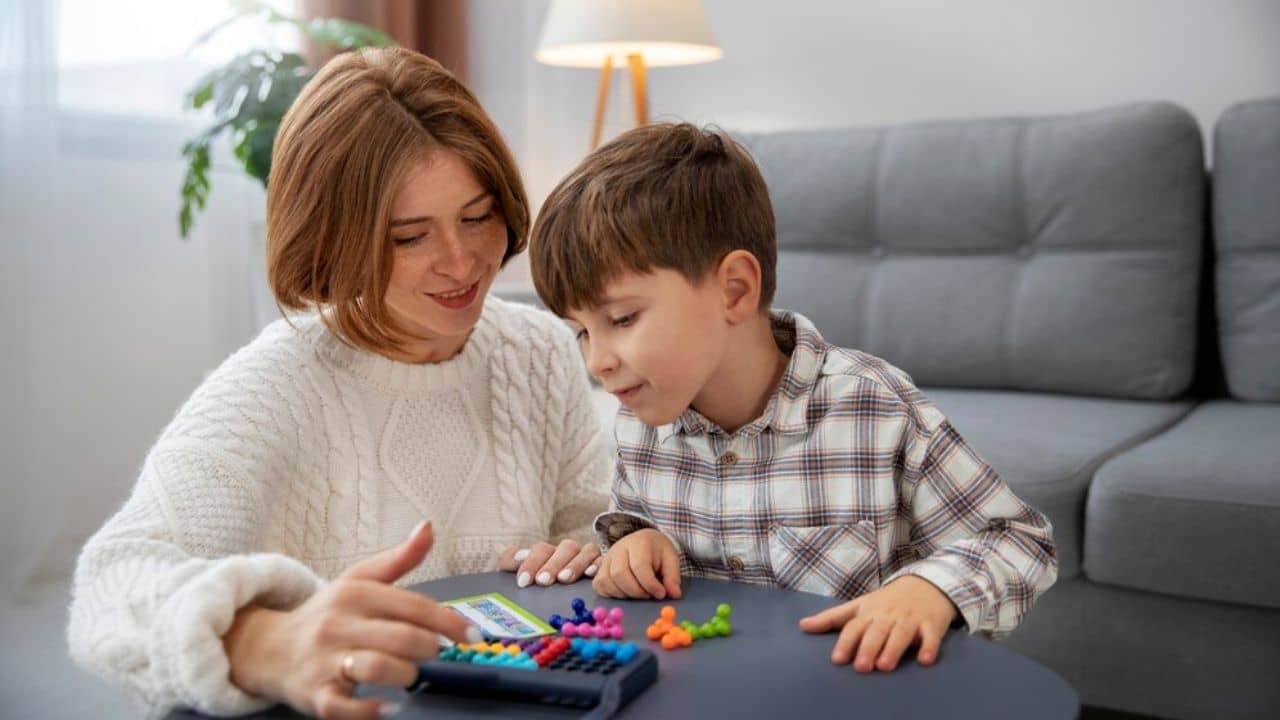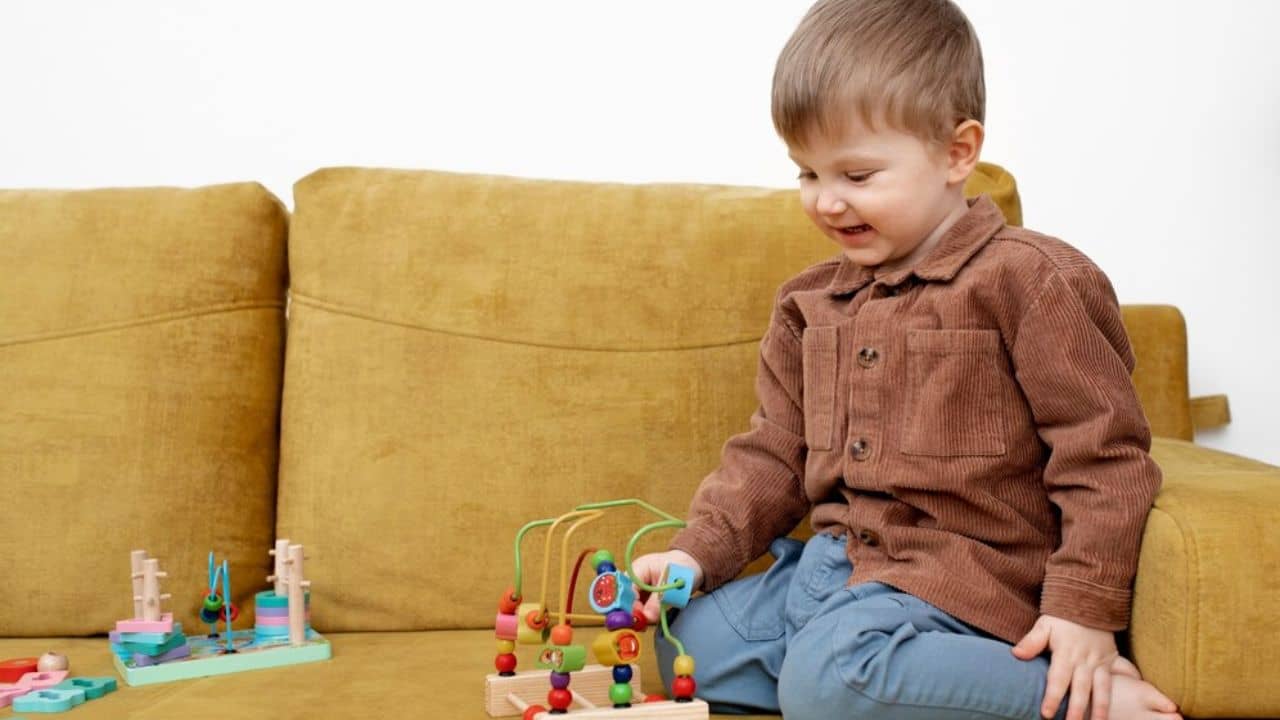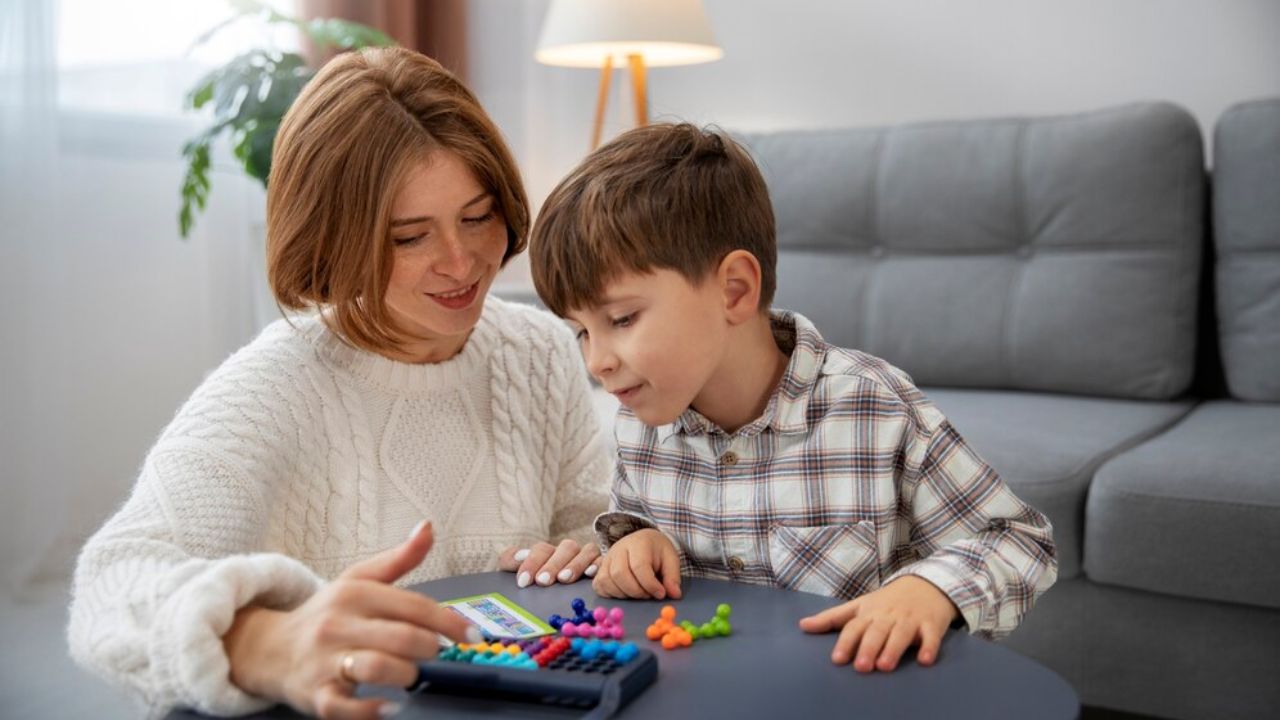Autism Spectrum Disorder (ASD) is a developmental condition that affects communication, behavior, and social interaction. Recognizing the early signs of autism can be crucial for accessing support and interventions that can significantly improve the quality of life for individuals with ASD. While every child develops at their own pace, there are specific signs that may indicate the presence of autism. Understanding these signs can help parents and caregivers seek appropriate evaluations and interventions early on. Early Signs of Autism: What to Look For
Communication Challenges in Early Signs of Autism
Communication is a fundamental aspect of human interaction, and challenges in this area are often among the earliest and most noticeable signs of Autism Spectrum Disorder (ASD). Understanding these communication challenges can help in recognizing potential early signs of autism and seeking appropriate interventions. Here, we delve deeper into the specific communication difficulties commonly associated with autism.

One of the most common early indicators of autism is delayed speech and language development. Children with autism may not reach typical speech milestones within the expected timeframes.
- By 12 Months: Limited babbling, few or no gestures like pointing, waving, or nodding. Children may not respond to their name or show interest in common sounds.
- By 16 Months: Not speaking single words or using meaningful gestures.
- By 24 Months: Not forming simple two-word phrases independently (excluding imitative or repetitive speech).
Parents might notice that their child is not attempting to communicate verbally or non-verbally in ways typical for their age.
- Difficulty in Understanding or Using Non-Verbal Communication
Non-verbal communication is a crucial part of interacting with others. Children with autism often struggle with understanding and using these cues effectively.
- Limited Eye Contact: Children may avoid making eye contact or may not use eye contact to communicate or engage with others.
- Facial Expressions: They might have a limited range of facial expressions and may not match their facial expressions to their emotions or words.
- Gestures: There might be a noticeable lack of gestures such as pointing, waving, or nodding. They might also fail to understand or respond appropriately to the gestures of others.
- Repetitive or Unusual Speech Patterns
Children with autism may exhibit distinctive speech patterns that can be a clear indicator of their communication challenges.
- Echolalia: This involves repeating words or phrases heard from others, often without understanding their meaning. It can be immediate (echoing right after hearing) or delayed (echoing after some time).
- Unusual Tone of Voice: Some children might speak in a monotonous, flat, or sing-song tone, lacking the typical inflections of natural speech.
- Difficulty in Conversations: They might have trouble starting or maintaining a conversation, sticking rigidly to specific topics, or failing to engage in reciprocal dialogue. They might also have difficulty understanding jokes, sarcasm, or idioms.

- Lack of Functional Communication
Functional communication refers to using language in a way that is practical and meaningful to achieve a purpose, such as asking for help, making choices, or expressing needs and desires.
- Limited Use of Language: Children might use very few words or phrases functionally, even if they can repeat or memorize words.
- Communication for Needs: They may not use language effectively to communicate their needs, instead relying on gestures, behaviors, or pulling caregivers to objects of interest.
- Understanding Requests: There can be difficulties in understanding and following simple instructions or requests.
- Unconventional Use of Language
Children with autism may also use language in ways that seem unusual or out of context.
- Idiosyncratic Phrases: They might use words or phrases in a unique way that is meaningful to them but not understandable to others.
- Invented Words: Some children might create their own words or phrases.
- Literal Interpretation: They might interpret language very literally and struggle with figurative speech or abstract concepts.
Importance of Early Recognition and Intervention
Early recognition of these communication challenges is crucial. If you notice any of these signs, it is essential to seek a professional evaluation. Early intervention can significantly improve communication skills and overall development.
Steps for Early Intervention:
- Consult a Pediatrician or Specialist: Share your observations with your child’s doctor, who can refer you to specialists for further evaluation.
- Speech and Language Therapy: A speech-language pathologist can work on developing communication skills through tailored therapy.
- Early Intervention Programs: These programs offer a range of services, including speech therapy, occupational therapy, and behavioral interventions, specifically designed for young children with developmental delays.
- Parental Support and Training: Parents can benefit from training to use strategies that support their child’s communication development at home.

- Repetitive or R
Early Signs of Autism: What to Look For
Autism Spectrum Disorder (ASD) is a developmental condition that impacts social interactions, communication, and behavior. Recognizing early signs of autism can be crucial for accessing support and interventions that can significantly enhance the quality of life for individuals with ASD. While each child develops at their own pace, certain signs may indicate the presence of autism. Understanding these signs helps parents and caregivers seek appropriate evaluations and interventions early on.
Communication Challenges
- Delayed Speech and Language Skills
Delayed speech and language skills are often one of the earliest signs of developmental differences, including Autism Spectrum Disorder (ASD). While every child develops at their own pace, delays in speech and language milestones can indicate potential challenges that warrant further evaluation and support. Let’s explore the significance of delayed speech and language skills as an early sign of autism and what parents and caregivers can do if they notice these delays in their child.
Understanding Delayed Speech and Language Skills
- Milestone Markers:
- By 12 months: Most children start babbling, imitating sounds, and may even say a few simple words like “mama” or “dada.”
- By 18 months: Typically, children have a vocabulary of about 10-50 words and can start combining words into simple phrases.
- By 24 months: Children usually have an expanding vocabulary and can construct two-word sentences.
- Signs of Delay:
- Limited or absent babbling by 12 months.
- Not using gestures like pointing or waving by 12-16 months.
- Lack of single-word speech by 16-18 months.
- Absence of two-word phrases by 24 months.
Recognizing Delayed Speech and Language in Autism
- Lack of Communication Attempts: Children with autism may not initiate communication through babbling, gestures, or attempts at vocalization.
- Limited Vocabulary: They might have a significantly smaller vocabulary or struggle to use words functionally to express their needs and wants.
- Echolalia: Some children with autism may repeat words or phrases they’ve heard (echolalia) without demonstrating comprehension or using them in context.
- Difficulty with Pronouns: They might struggle with pronoun use, referring to themselves or others by name or using incorrect pronouns.
Potential Causes and Contributing Factors
- Sensory Processing Differences: Children with autism may have sensory sensitivities that impact their ability to process auditory input, affecting their speech development.
- Motor Challenges: Fine motor delays can affect the coordination needed for speech production, leading to difficulties in articulation.
- Social Communication Differences: Challenges in understanding and responding to social cues can hinder language development, as communication is inherently social.
What Parents and Caregivers Can Do
- Early Intervention: Seek evaluation and support from pediatricians and specialists experienced in autism diagnosis and intervention as soon as you notice delays or atypical language development.
- Speech and Language Therapy: Enroll your child in speech therapy sessions tailored to their individual needs. These sessions can focus on improving communication skills, articulation, and language comprehension.
- Create a Language-Rich Environment: Encourage communication through play, reading, and everyday interactions. Use visual supports and gestures to enhance understanding.
- Patience and Persistence: Progress may be gradual, but consistent support and encouragement can make a significant difference in your child’s language development over time.

- Difficulty in Understanding or Using Non-Verbal Communication
Difficulty in understanding or using non-verbal communication is a significant hallmark of Autism Spectrum Disorder (ASD). Non-verbal communication encompasses gestures, facial expressions, body language, and eye contact, all crucial components of social interaction and communication. Let’s delve deeper into how difficulties in non-verbal communication manifest in individuals with autism and how caregivers can offer support.
Understanding Non-Verbal Communication Challenges in Autism
- Limited Eye Contact:
- Individuals with autism may avoid or have difficulty maintaining eye contact during conversations or social interactions.
- Lack of Facial Expressions:
- They might have a restricted range of facial expressions, making it challenging for others to interpret their emotions or intentions.
- Difficulty with Gestures:
- Children with autism may not use or understand common gestures like pointing, waving, or nodding appropriately.
- Unusual Body Language:
- Their body language may appear stiff, repetitive, or atypical, which can affect how they are perceived in social settings.
Signs of Non-Verbal Communication Challenges
- Social Disengagement:
- They may seem disinterested or aloof in social interactions, appearing distant or unresponsive.
- Misinterpretation of Social Cues:
- Individuals with autism may struggle to interpret subtle social cues, leading to misunderstandings or miscommunication.
- Difficulty in Turn-Taking:
- They may have trouble engaging in reciprocal conversations or activities that require turn-taking and cooperation.
- Literal Interpretation:
- They may interpret language or instructions very literally, leading to confusion or misunderstandings in social contexts.
Causes and Contributing Factors
- Sensory Sensitivities:
- Sensory differences in individuals with autism may affect how they perceive and process non-verbal cues, leading to difficulties in interpretation.
- Theory of Mind Deficits:
- Challenges in understanding the perspectives, intentions, and emotions of others (theory of mind) can impact their ability to interpret non-verbal communication.
- Executive Functioning Differences:
- Difficulties in planning, organizing, and sequencing information may affect their ability to respond appropriately in social situations.
Supporting Individuals with Non-Verbal Communication Challenges
- Visual Supports:
- Use visual aids such as picture schedules, social stories, or visual schedules to supplement verbal communication and enhance understanding.
- Explicit Teaching:
- Provide direct instruction on non-verbal cues, gestures, and facial expressions through role-playing, modeling, and guided practice.
- Social Skills Training:
- Engage in structured social skills interventions that teach specific social behaviors, turn-taking, and perspective-taking skills.
- Patience and Understanding:
- Be patient and understanding when communicating with individuals with autism, allowing them time to process information and respond in their own way.

- Repetitive or Unusual Speech Patterns
Repetitive or unusual speech patterns are common characteristics observed in individuals with Autism Spectrum Disorder (ASD). These patterns can manifest in various ways, impacting communication and social interaction. Understanding these speech patterns and their significance can help caregivers provide appropriate support and interventions. Let’s explore some of the repetitive or unusual speech patterns commonly seen in individuals with ASD:
Echolalia
Echolalia involves the repetition of words or phrases spoken by others. It can manifest in two forms:
- Immediate Echolalia: Repeating words or phrases immediately after hearing them, often without apparent comprehension.
- Delayed Echolalia: Repeating words or phrases after a delay, which could range from a few minutes to hours or even days.
Scripting
Scripting refers to the repetition of lines from movies, TV shows, books, or previous conversations. Individuals with autism may use scripting as a way to communicate, self-regulate, or express themselves.
Pronoun Reversal
Some individuals with autism may struggle with pronoun use, often referring to themselves in the third person or using incorrect pronouns.
Palilalia
Palilalia involves repeating one’s own words or phrases, often multiple times. It can occur immediately after speaking or be delayed.
Unusual Intonation or Prosody
Individuals with autism may exhibit atypical intonation patterns or prosody in their speech, such as a monotone voice or exaggerated inflection.
Idiosyncratic Language
Some individuals with autism may develop idiosyncratic language, using words or phrases in unique ways that may be unconventional or difficult for others to understand.
Literal Interpretation
Individuals with autism may have difficulty understanding figurative language, sarcasm, or idiomatic expressions, interpreting language very literally.
Repetitive Questions or Statements
Repetitive questioning or statements may occur, often as a way to seek reassurance, express anxiety, or maintain predictability in their environment.
Causes and Contributing Factors
Several factors may contribute to repetitive or unusual speech patterns in individuals with autism:
- Sensory Processing Differences: Differences in sensory processing may influence how individuals with autism perceive and process language.
- Cognitive Processing Differences: Challenges in cognitive processing, including executive functioning and theory of mind, may impact language comprehension and expression.
- Communication as a Coping Mechanism: Repetitive speech patterns may serve as coping mechanisms, providing comfort, or reducing anxiety in social situations.
Supporting Individuals with Repetitive Speech Patterns
- Promote Functional Communication: Encourage the use of functional communication strategies to express needs, wants, and preferences.
- Provide Visual Supports: Use visual aids, schedules, and social stories to support comprehension and communication.
- Model and Reinforce Appropriate Communication: Model appropriate language and communication skills and provide positive reinforcement for using them.
- Speech and Language Therapy: Seek support from speech-language pathologists who can provide targeted interventions to address specific communication challenges.
- Support Social Skills Development: Provide opportunities for social interaction and practice, focusing on turn-taking, perspective-taking, and reciprocal conversation skills.

Social Interaction Difficulties
Social interaction difficulties are a core characteristic of Autism Spectrum Disorder (ASD), often presenting challenges in communication, understanding social cues, and forming meaningful relationships. Let’s explore some common difficulties individuals with ASD may experience in social interactions:
- Limited Interest in Peer Relationships
- Preferential Solitary Activities: Individuals with ASD may prefer solitary activities over social interactions with peers.
- Difficulty Initiating Social Interactions: They may struggle to initiate conversations or play with others.
- Lack of Interest in Group Play: Participation in group activities or games may be limited due to difficulties with social engagement.
- Impaired Social Communication Skills
- Difficulty Maintaining Conversations: Individuals with ASD may have challenges maintaining reciprocal conversations, often focusing on specific topics of interest.
- Literal Understanding: They may interpret language literally, leading to misunderstandings in social contexts.
- Limited Use of Non-Verbal Communication: Gestures, facial expressions, and body language may be used sparingly or absent.
- Trouble Understanding Social Cues
- Difficulty Interpreting Facial Expressions: Recognizing and understanding subtle facial expressions may be challenging.
- Misinterpretation of Tone and Intonation: Understanding the emotional tone of a conversation or the speaker’s intentions may be difficult.
- Inability to Detect Social Norms: Difficulty understanding social norms and appropriate behavior in different contexts.
- Challenges with Perspective-Taking
- Limited Theory of Mind: Difficulty understanding the perspectives, thoughts, and feelings of others.
- Lack of Empathy: Difficulty recognizing and responding to others’ emotions and experiences.
- Trouble with Figurative Language: Difficulty understanding metaphors, sarcasm, or humor.
- Sensory Sensitivities
- Overwhelmed by Sensory Input: Sensory sensitivities can make social environments overwhelming, leading to withdrawal or avoidance.
- Distressed by Social Situations: Loud noises, bright lights, or crowded spaces may cause discomfort and distress, affecting social interactions.
- Repetitive Behaviors Interfering with Social Engagement
- Engagement in Stereotyped Behaviors: Repetitive movements or behaviors may interfere with social engagement and interaction.
- Preference for Routines: Insistence on sameness and adherence to routines may limit flexibility in social situations.
Supporting Individuals with Social Interaction Difficulties
- Structured Social Skills Training: Engage in structured social skills interventions focusing on communication, perspective-taking, and social reciprocity.
- Visual Supports: Use visual aids, social stories, and visual schedules to help individuals understand social expectations and navigate social situations.
- Role-Playing and Modeling: Practice social interactions through role-playing and modeling appropriate social behaviors.
- Promote Peer Interactions: Facilitate opportunities for positive social interactions with peers in structured settings.
- Create Supportive Environments: Create sensory-friendly environments and provide accommodations to support individuals with ASD in social settings.

Behavioral Characteristics
Behavioral characteristics are key aspects of Autism Spectrum Disorder (ASD) and encompass a wide range of behaviors that may be observed in individuals with ASD. These behaviors can vary significantly among individuals, but some common behavioral characteristics include:
- Repetitive Behaviors
- Stereotyped Movements: Repetitive movements such as hand-flapping, rocking, spinning objects, or body rocking.
- Ritualistic Behaviors: Insistence on sameness, adherence to routines, or specific rituals that must be followed.
- Special Interests: Intense, focused interests in specific topics or objects, often to the exclusion of other activities or interests.
- Sensory Sensitivities
- Hypersensitivity: Over-responsiveness or heightened sensitivity to sensory stimuli such as sounds, lights, textures, tastes, or smells.
- Hyposensitivity: Under-responsiveness or diminished sensitivity to sensory input, seeking sensory stimulation through repetitive behaviors or activities.
- Communication Challenges
- Delayed Speech and Language Skills: Difficulty in acquiring and using spoken language, delayed speech development, or atypical language use.
- Echolalia: Repetition of words or phrases heard previously, either immediately or after a delay.
- Non-Verbal Communication Difficulties: Challenges in understanding or using non-verbal communication such as gestures, facial expressions, or body language.
- Social Interaction Difficulties
- Limited Interest in Social Interaction: Preferring solitary activities over social engagement with peers or difficulty initiating and maintaining social interactions.
- Difficulty Understanding Social Cues: Challenges in interpreting social cues, understanding others’ emotions, or following social norms.
- Lack of Empathy: Difficulty recognizing and understanding others’ emotions and perspectives.
- Cognitive and Behavioral Rigidity
- Resistance to Change: Strong preference for routines and predictability, becoming upset or distressed by changes in routine or environment.
- Rigid Thinking: Difficulty with flexible thinking, problem-solving, or adapting to new situations or tasks.
- Fixation on Details: Focusing intensely on specific details or elements of a situation while missing the broader context.
- Challenging Behaviors
- Aggression: Aggressive behaviors such as hitting, kicking, or biting, often stemming from frustration, sensory overload, or difficulty communicating needs.
- Self-Injurious Behavior: Behaviors that cause harm to oneself, such as head-banging, scratching, or biting, often associated with sensory overload or communication challenges.
- Tantrums or Meltdowns: Extreme emotional reactions to stress, frustration, or sensory overload, resulting in outbursts or meltdowns.
Supporting Individuals with Behavioral Characteristics of ASD
- Individualized Support: Recognize and address the unique needs of each individual with ASD, providing tailored interventions and support.
- Structured Environment: Create structured routines and environments to promote predictability and reduce anxiety.
- Positive Behavior Support: Use positive reinforcement and proactive strategies to encourage desired behaviors and reduce challenging behaviors.
- Sensory Supports: Provide sensory accommodations and strategies to help individuals regulate sensory input and manage sensory sensitivities.
- Communication Support: Use visual supports, augmentative and alternative communication (AAC) devices, and social stories to support communication skills and understanding.

Conclusion
Early identification and intervention are key to helping children with autism reach their full potential. By recognizing the early signs of autism and seeking appropriate evaluations and support, parents and caregivers can provide the necessary resources to support their child’s development. Remember, every child with autism is unique, and tailored interventions can make a significant difference in their lives.




